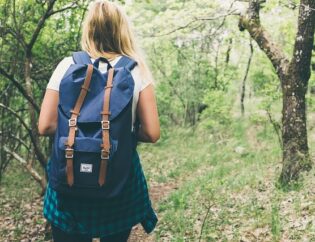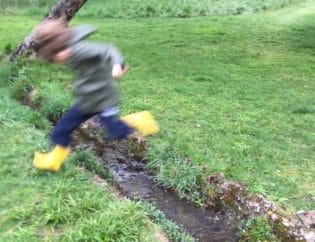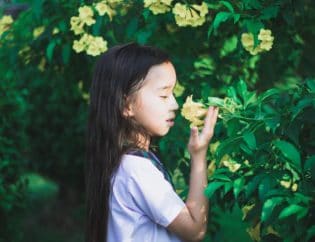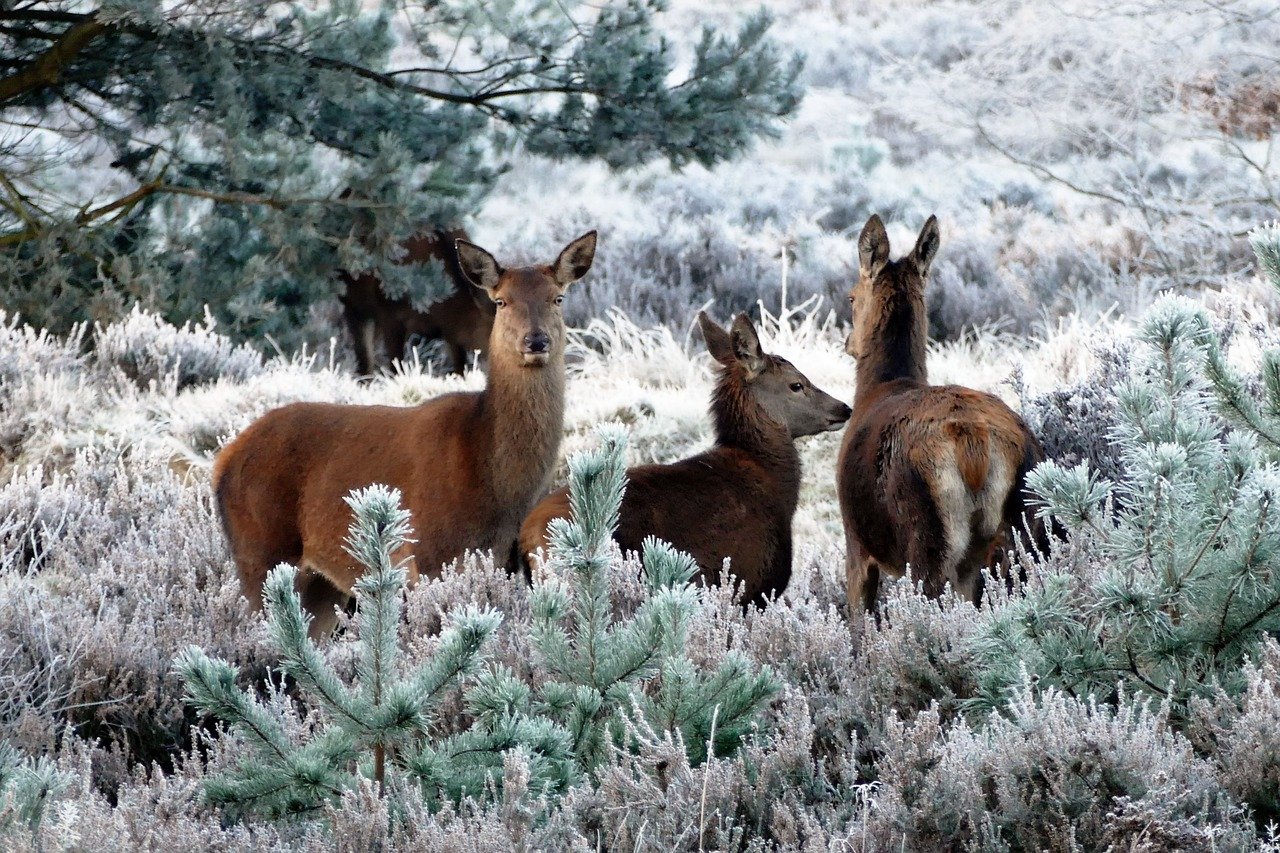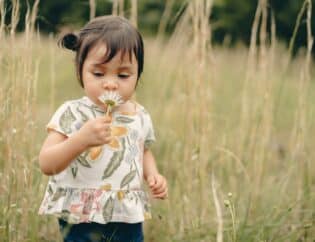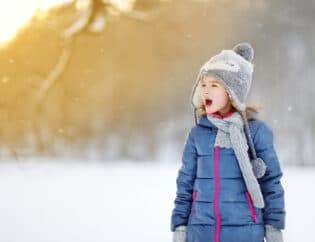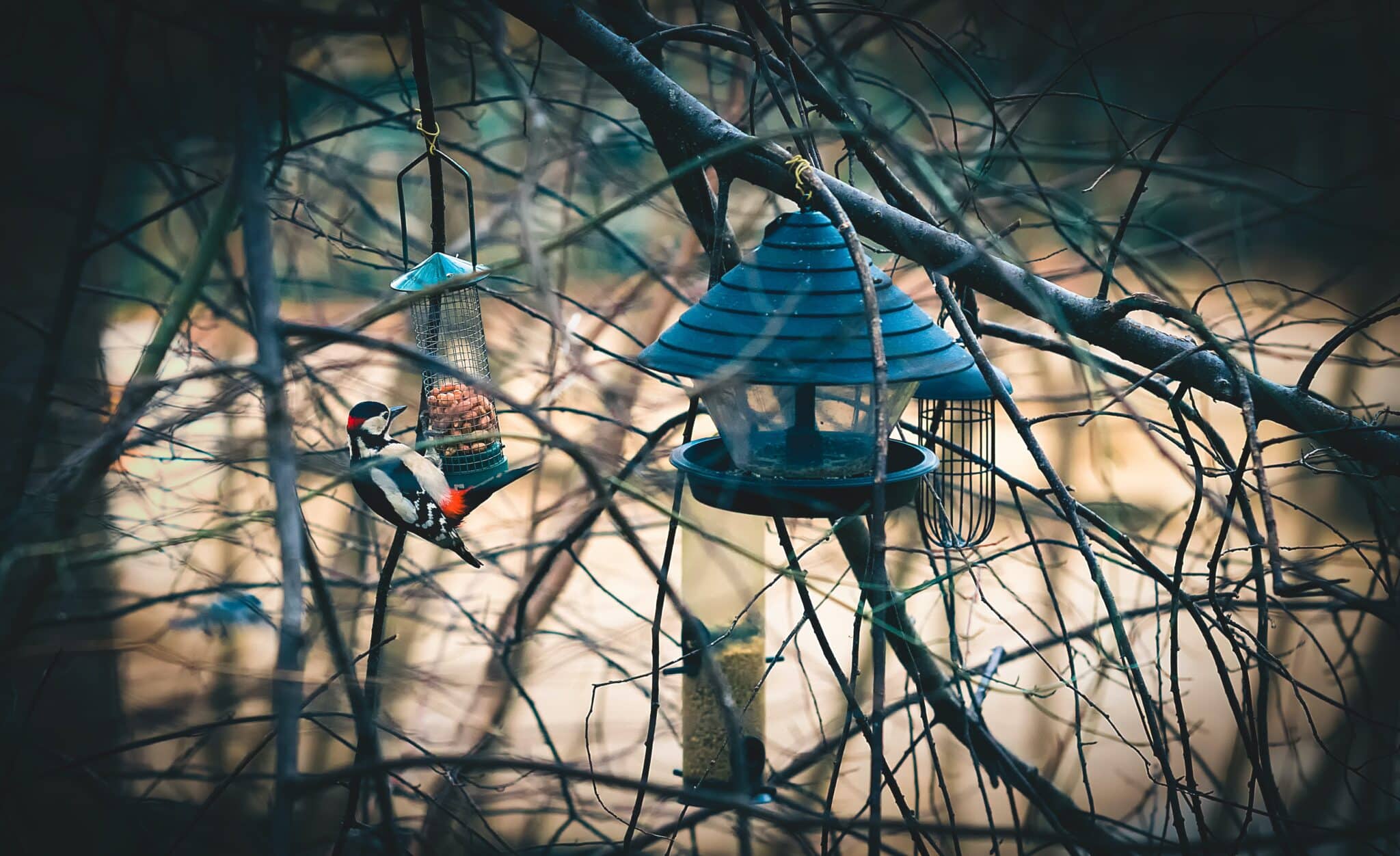
Nature offers us the most precious and vital gifts each and every day. But one of the most entertaining, beautiful, and amazing gifts it offers is birds. Virtually anywhere you are outside in nature, you will see them. Colorful, acrobatic, and always busy, birds can make even the gloomiest day cheerier or most austere environment vibrant.
You can (and should) head out to as many bird habitats to observe birds with your children. But fortunately, one of the best spots is right outside your window. Here, at the backyard feeder, social dynamics, personalities, and behaviors come alive. Children can see with their own eyes how docile the mourning dove is. How aggressive the blue jay is. And watch them all scatter when a predator is near!
It’s a joy to watch birds at the feeder. But it’s also an excellent way to teach your child everyday ways they can care for nature. Children can get hooked on birds by watching backyard birds. Taking part in backyard bird feeding can teach your child about the needs of wild birds and the importance of stewardship
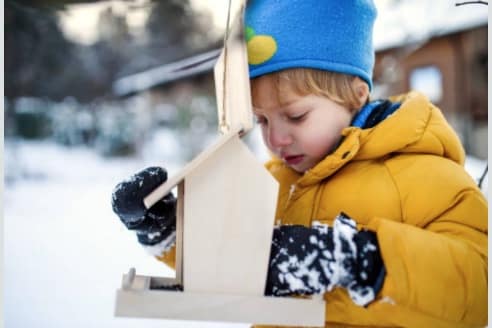
Millions of people take part in feeding birds each year. In fact, $4 billion a year is spent on feeders and primarily on seed, in the United States alone.
And while some people have different opinions, the fact is that if you provide nutritious food during the right time of year, you are helping birds, not hurting them. There is no question that birds are more likely to survive winter if they get fed. Studies have shown that birds with access to bird feeders in winter survive at a higher rate than birds without access to feeders. Particularly in urban areas, where humans continually convert natural areas to serve our own needs, providing resources for birds may be critical to some species.
Whether you make your own feeder or buy one ready-made, taking part in backyard or park bird feeding is a gratifying activity. But there are expert-approved ways to approach it. We’ve rounded up advice from the experts here!
Keep It Nutritious
Of course, what you should feed will depend on who is visiting your feeder. Your children can learn about backyard birds likely to visit your yard. You may just want to put the feeders out there and see who comes. Not all birds like the same foods. Choosing more than one type of food and type of feeder will prevent crowding at your backyard buffet.
To help birds thrive, put out high-energy foods in your feeders such as seeds, suet, and peanut butter. The fat in suet is crucial to the energy needs of birds. It gives a needed energy boost to winter birds, without which, they might not survive the winter.
Avoid putting out table scraps as most table scraps will likely attract unwanted guests such as mice or rats. Bread (fresh or stale) provides no real nutritional value for birds. Despite what your granny believed, moldy bread can be directly harmful to birds and cause fungal diseases such as aspergillosis. And in case you ever wondered, chocolate is toxic to birds too.
Keep It Tidy
Just as you would keep your dining table clean and tidy, keep your backyard feeders in tip-top shape. Birds can get seriously ill from unsanitary feeders. A diseased bird can spread the illness to others if the feeder/waterer is not kept clean. Most feeders should be very easy to clean. Just take it apart and use a dishwasher on a hot setting or hand wash either with soap and boiling water or with a dilute bleach solution (no more than 1 part bleach to 9 parts water). Rinse thoroughly and allow to dry before refilling.
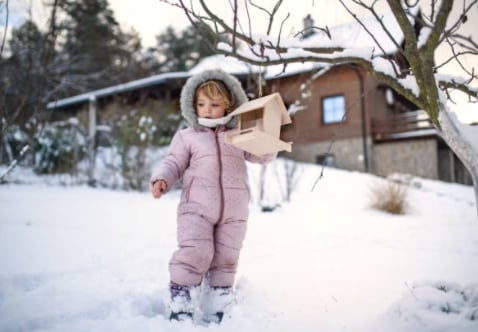
Keep It Seasonal
Tend to your feeders during seasons when birds need the most energy, such as late winter or early spring when seed sources are depleted.
Fall migration, when birds head off to their wintering grounds, is an exhausting feat. It requires tons of calories for the energy necessary to fly hundreds or thousands of miles. Bird feeders can help wild birds build up body fat as they are preparing for their long journey south. They can also be a refueling stop for passing migrants as well as help resident birds build up fat reserves for their journey or to survive falling temperatures. Because of the physical demands of migration, it’s important to give migrating birds the best nutrition possible. The best seeds for fall feeding are those that have a lot of protein and fat packed inside of each bite such as sunflower seed, peanut hearts and safflower seed.
Some people are hesitant to feed in the fall because they believe that if birds have a steady source of food available in autumn, they won't migrate, and then, when those feeders are empty, the birds will starve. But experts say that this is not true. Daylight levels, climate, and instinct also play important roles in seasonal migration. A reliable food source is only a minor factor. So go ahead and feed fall birds, but do it responsibly.
Rest assured that most birds don't need your help in the summer. And though you might assume that nestling season is a crucial time to keep birdfeeders well stocked, many birds focus on eating big fat insects for their nutrition boost when rearing young. It is also important for young birds to learn how to find naturally occurring foods, so take a break from filling feeders in summer.
Keep It Safe
We know it is glorious to watch birds from a picture window in your living room but birds can easily slam into nearby windows that are too closeby. Try to place your feeder in a collision-free location. A feeder that is 30 feet or more from a window is a safe distance from confusing reflections, while one within 3 feet prevents a bird from building up enough momentum for a fatal collision.
Safety also applies to safety from predators. To help birds feel safe from predators, place feeders twelve feet from a brush pile, evergreen tree, or bush where they can quickly fly to reach safe cover. You could also place chicken wire or thorny branches around ground-level feeders.
Remember the Water!
Keeping birds safe when visiting your feeders requires three essential ingredients: the right mix of quality seed and other foods, protection from predators, and a source of fresh water for drinking and bathing. Never underestimate the need to provide a water source. Even in the winter, birds need a drink. In the winter, you might want to add a water heater so you can keep your birdbath open in the coldest of weather.
Duck, Duck, Goose
If you’ve ever run across a post suggesting you feed waterfowl such as wild ducks, geese, and swans, you’ve noticed this is a very contentious issue. The fact is that waterfowl feed on a variety of grains and grasses, aquatic plants, and invertebrates, which are all naturally found in the wild. So a water habitat should provide for all the nutritional needs a wild duck or goose needs to survive.
Still, it is a fun activity for kids to feed the ducks, geese and swans. Most experts say it’s OK to do it, just be mindful of what you’re serving them. Foods commonly fed to waterfowl in public parks, such as bread, crackers, popcorn, and corn, are typically low in protein and essential nutrients and minerals (such as calcium and phosphorus). Every once in a while, these foods are fine. But if these foods become the main nutritional source, the birds can easily develop serious disorders such as metabolic bone disease or MBD. Waterfowl in public parks are often admitted to wildlife rehabilitation centers MBD. The disease results from calcium deficiency from a poor diet, leaving the birds with soft bones and joints that are often malformed and fractured. Birds with MBD are often so malformed they cannot fly and become dependent on handouts, completing a vicious cycle.
Angel wing is another common issue with ducks and geese in public parks. This is a condition where the ends of an affected bird’s flight feathers are twisted upward and occurs when ducks and geese grow abnormally quickly from eating a high proportion of bread.
Because we have no idea what other bird lovers are feeding them, we have to assume the birds are receiving a calcium-poor diet. You and your child can help them stay healthy by always offering healthier food such as chopped/ripped up green vegetables and wheat grain.
As far as when to feed waterfowl, winter is the best time to feed water birds. This is when natural vegetation is in short supply and other people are less likely to be out offering food. Conversely, in spring and summer, young birds need to learn to forage for plants and insects for a balanced diet and good physical development.
So go on and feed the birds with your child. But always keep your feeders clean, offer decent food, place feeders a safe distance from windows. Always teach your child to respect space and keep a safe distance of wild birds, whether in your backyard or in a public park. And most importantly, keep learning about birds with your children so we can help them most effectively!

